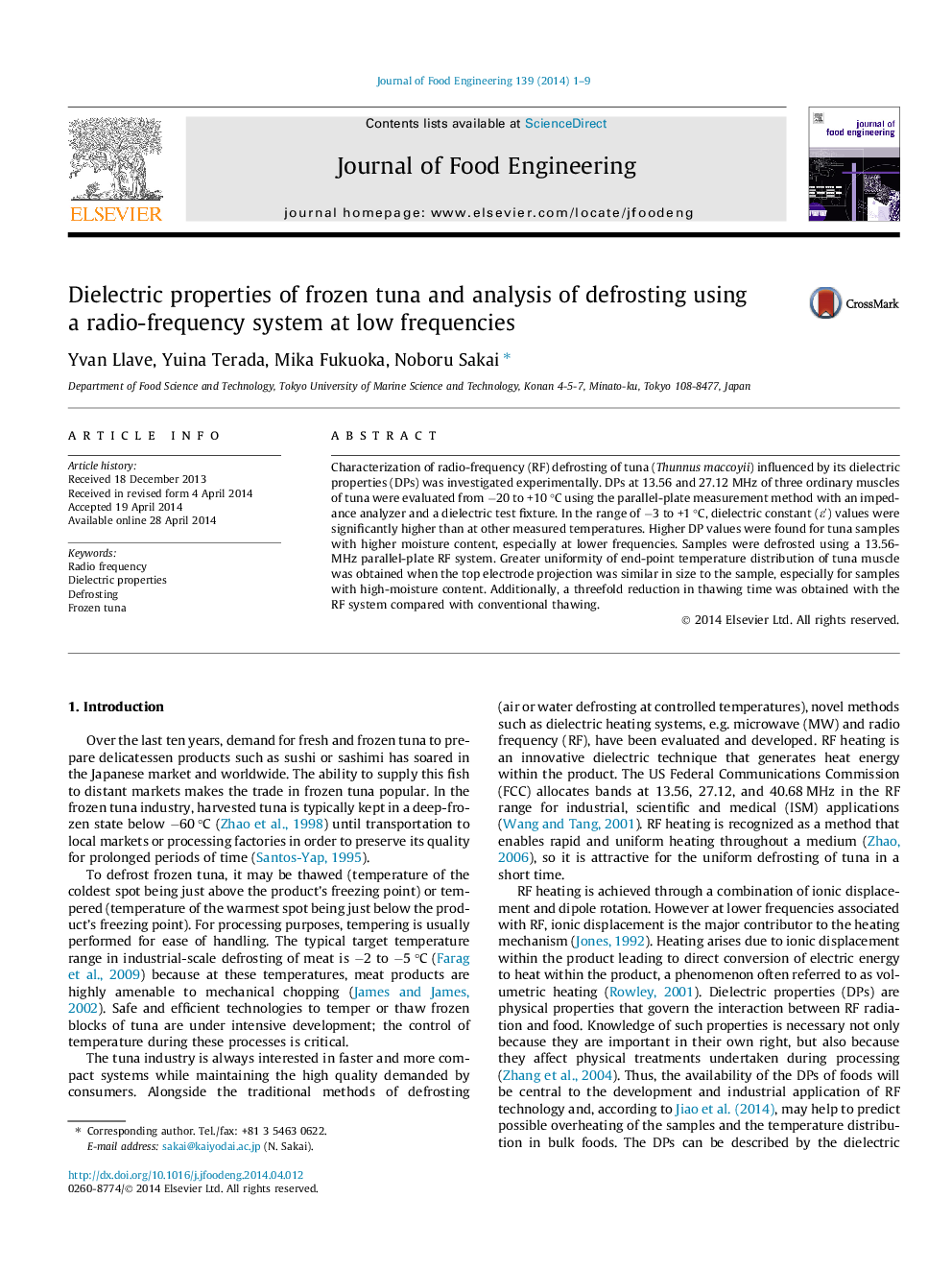| Article ID | Journal | Published Year | Pages | File Type |
|---|---|---|---|---|
| 223061 | Journal of Food Engineering | 2014 | 9 Pages |
•Dielectric properties (DPs) of frozen tuna in the range of −20 to +10 °C were measured.•Effect of frequency (13.56 and 27.12 MHz) and muscle composition on DPs were evaluated.•The values of DPs decreased with increased frequency or decreased moisture content.•Using electrode of similar size to the sample showed better RF heating uniformity.•A more uniform temperature distribution was obtained at low RF power for lean samples.
Characterization of radio-frequency (RF) defrosting of tuna (Thunnus maccoyii) influenced by its dielectric properties (DPs) was investigated experimentally. DPs at 13.56 and 27.12 MHz of three ordinary muscles of tuna were evaluated from −20 to +10 °C using the parallel-plate measurement method with an impedance analyzer and a dielectric test fixture. In the range of −3 to +1 °C, dielectric constant (ε′) values were significantly higher than at other measured temperatures. Higher DP values were found for tuna samples with higher moisture content, especially at lower frequencies. Samples were defrosted using a 13.56-MHz parallel-plate RF system. Greater uniformity of end-point temperature distribution of tuna muscle was obtained when the top electrode projection was similar in size to the sample, especially for samples with high-moisture content. Additionally, a threefold reduction in thawing time was obtained with the RF system compared with conventional thawing.
